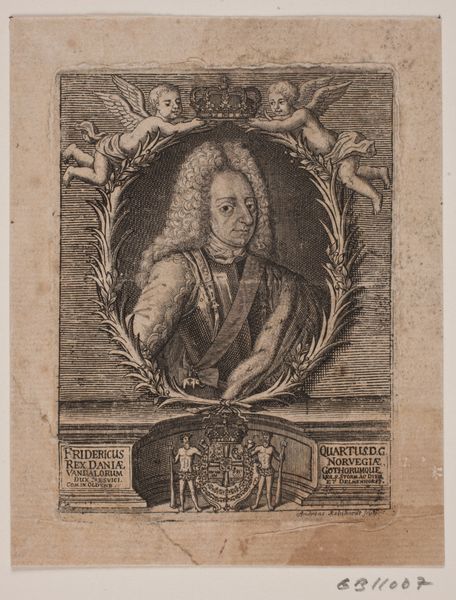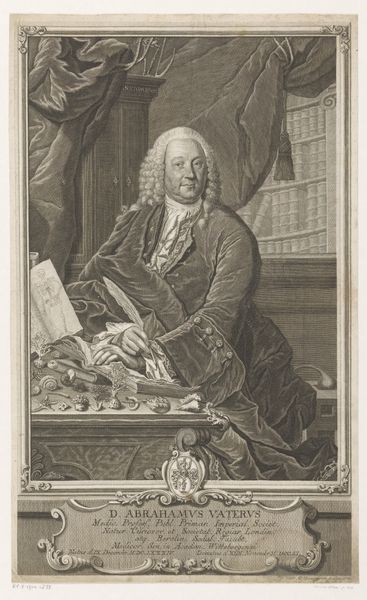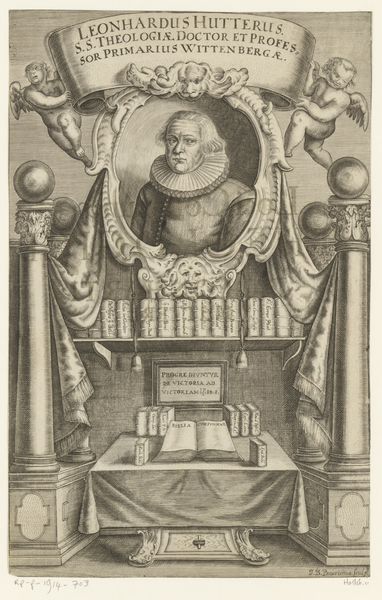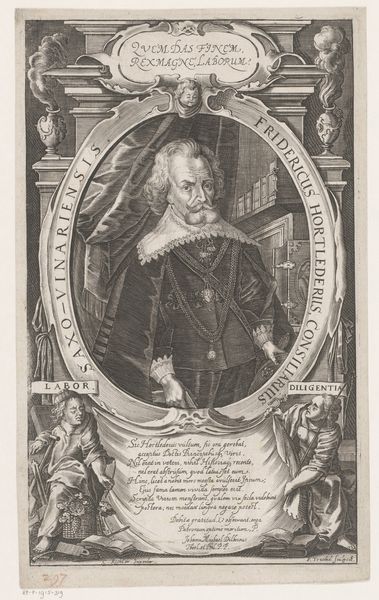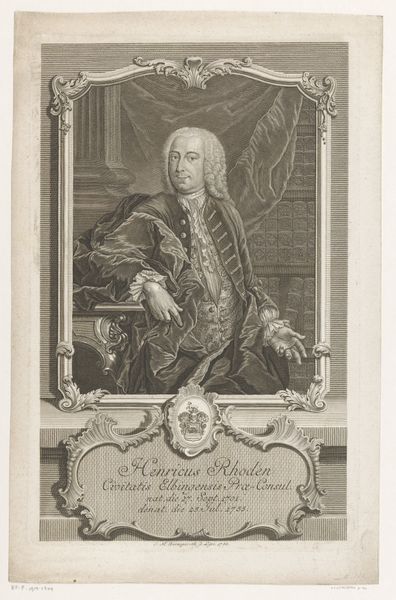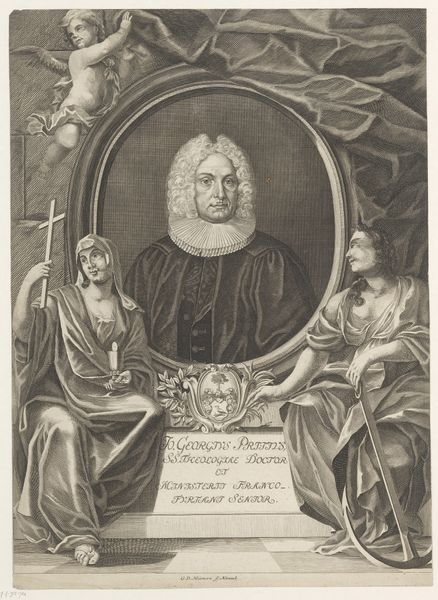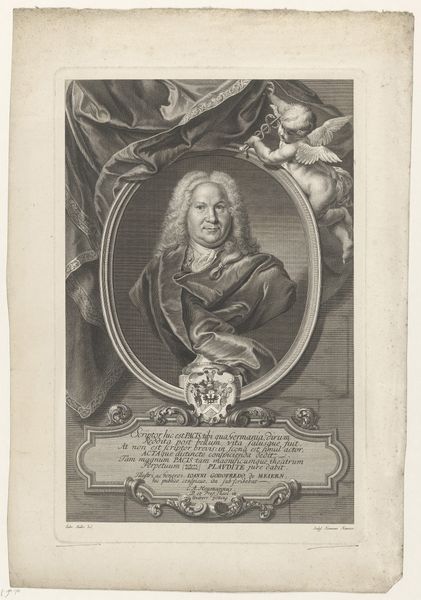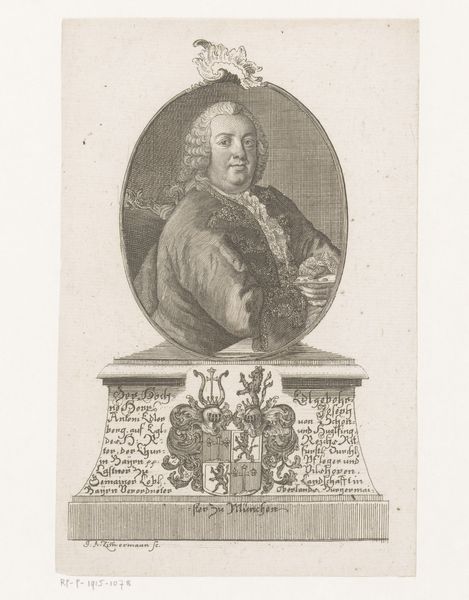
drawing, print, engraving
#
portrait
#
drawing
#
baroque
# print
#
old engraving style
#
history-painting
#
engraving
Dimensions: 493 mm (height) x 412 mm (width) (bladmaal)
Curator: Standing before us is a piece titled "Otto Krag. Mindeblad," dating back to somewhere between 1666 and 1669. It’s attributed to Albert Haelwegh and is currently housed at the SMK, the Statens Museum for Kunst. Editor: Wow, my initial thought? Impressive detail. It’s almost overwhelming – like a carefully constructed stage set. There's an aura of gravity surrounding this portrait. Curator: Well, it's an engraving, so that precision comes with the process. It’s quite literally etched in time. I think you are right: engravings, by virtue of being editions of multiple impressions, can speak to the power, mechanization, labor, and cost involved in image reproduction. The means reflect an ideal and disseminate an image or ideology to many viewers simultaneously. Look at the various coats of arms; all made the same using a fixed process. Editor: Precisely! And thinking about the physical process—the copper plate, the acid, the meticulous carving. Each line had to be physically manifested, right? There is this interplay of mortality and immortality in portraiture in that there is an ambition to outlive death, especially given how many details Haelwegh captured from Krag's likeness. Curator: Definitely. Think about it - Haelwegh’s dedication to the materiality reflects the very social conditions and power structures in Krag’s lifetime, even memorializing the societal contributions of figures like Otto Krag himself, the dedicatee. He wasn't just anyone; a historic person from his time whose mark mattered. What is remarkable for me, in any case, is the blend of portraiture with almost a historical record, all compacted into one very careful engraving. What's your reading? Editor: The cherubs feel a bit ironic, even mocking, in their placement alongside the endless lineages, the helmeted warrior, and the lady. There are, perhaps, layers of satirical critique here of Krag's ambitions, especially his desire to make an eternal impression by connecting it with various dynastic powers or military and commercial successes. Even as we admire Haelwegh’s engraving work, we might consider if its sharp, almost hyperrealistic detail serves to question more than affirm Krag's vision of himself. What could he not face within himself? Curator: It becomes something like a mirror reflecting his era's values, obsessions, and maybe its quiet anxieties. Food for thought, truly!
Comments
No comments
Be the first to comment and join the conversation on the ultimate creative platform.

